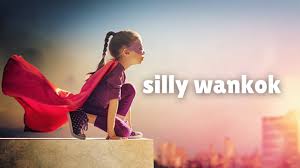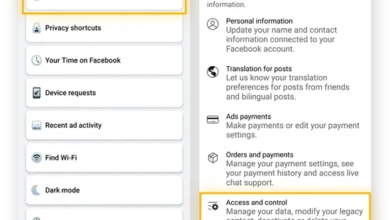Exploring the Whimsical World of Silly Wankok

Introduction to Silly Wankok
The whimsical concept of Silly Wankok, emerging from the confluence of playful imagination and cultural phenomena, has stirred interest across various demographics. Though its exact origins are somewhat nebulous, the term has been associated with lighthearted behavior and a characteristic silliness that transcends conventional expression. This engaging notion invites individuals to embrace their playful sides, encouraging creativity and spontaneity in everyday life.
Silly Wankok can be traced back to informal communal gatherings where people participated in various forms of entertainment. Typically characterized by humor, absurdity, and a carefree spirit, it embodies the joy of unstructured play. This concept resonates with those seeking an escape from daily pressures, offering a refuge through laughter and silliness. As society increasingly recognizes the importance of mental well-being, the celebration of such light-hearted amusement has seen a notable resurgence among diverse age groups.
Moreover, as individuals navigate the complexities of contemporary life, the whimsical allure of Silly Wankok provides a joyful reminder that embracing silliness can be both liberating and therapeutic. By exploring this captivating phenomenon, we delve deeper into its many facets, understanding its significance in today’s world, and celebrating the delightful essence of carefree joy through silliness.
The History Behind Silly Wankok
The term “silly wankok,” once rooted in playful vernacular, has evolved significantly throughout its history. Initially, it emerged from a blend of various cultural influences, serving as a lighthearted expression to describe foolish actions or behaviors. The origins can be traced back to early linguistic traditions in several communities where humor played a crucial role in social interactions. In these settings, terms similar to “silly wankok” encapsulated the essence of silliness, enabling individuals to navigate interpersonal relationships with a touch of joviality.
Culturally, “silly wankok” has found its niche, particularly in comedic contexts. During the late 20th century, with the rise of alternative comedy, the term garnered attention as comedians began to incorporate it into their routines. This shift marked a watershed moment for the term, broadening its appeal beyond informal usage. The whimsy associated with silly wankok allowed it to resonate with audiences who appreciated the absurdity of everyday life. Anecdotes abound from that era, highlighting memorable performances that utilized this expression, thereby cementing its place in pop culture.
Over the years, perceptions of “silly wankok” have varied, often depending on social and cultural contexts. While some viewed it as a mere joke, others adopted it as a symbol of irreverence, reflecting a desire to challenge societal norms through humor. Its evolution is marked by a growing acceptance within diverse communities, further solidifying its status as a recognized concept. The term not only showcases the dynamic nature of language but also illustrates the way cultural narratives can be shaped over time. The whimsical world of silly wankok continues to thrive, inviting new generations to engage with its rich history.
Characteristics of Silly Wankok
The whimsical realm of Silly Wankok is defined by an array of distinct characteristics that contribute to its unique charm. At the forefront is humor, which serves as the foundation of its essence. Silly Wankok thrives on the ability to evoke laughter and amusement through clever wordplay, absurd scenarios, and delightful surprises. This humor often emerges in unexpected forms, encouraging a light-heartedness that permeates various artistic expressions, from literature to visual arts.
Another characteristic that stands out within Silly Wankok is absurdity. The absurd twists and nonsensical elements challenge conventional logic and societal norms, leading participants to engage in a mindset where creativity knows no bounds. For example, a typical Silly Wankok narrative may involve anthropomorphic objects embarking on surreal adventures, defying reason while inviting audiences to revel in the sheer joy of imagination. This embrace of the absurd allows for an exploration of themes that are often deemed ‘out of the ordinary,’ creating an experience that is both refreshing and liberating.
Creative expression is the third pillar of Silly Wankok. Artists and writers associated with this movement often push the envelopes of creativity, unearthing new ways to portray narratives and characters. This could take the form of whimsical characters who exude eccentric personalities, or storylines woven with unexpected twists that keep the audience guessing. The creativity inherent in Silly Wankok encourages individuals to embrace their originality, highlighting the deep connections between silliness and profound meaning.
In essence, the characteristics of Silly Wankok—humor, absurdity, and creativity—intertwine to create a vibrant tapestry of experiences that invite exploration and engagement. These traits not only define the movement but also inspire individuals to participate, appreciate, and contribute to a culture steeped in lightheartedness and joy.
Cultural Impact of Silly Wankok
The term “silly wankok” often invokes laughter and amusement, serving as a unique cultural reference that permeates various forms of media and entertainment. Its whimsical nature has allowed it to thrive in comedic circles, inspiring a wealth of humorous content across platforms such as television, film, and online culture. The infusion of silly wankok into sketches and stand-up routines has prompted comedians to embrace absurdity, resulting in a genre that celebrates simplicity and silliness, engaging audiences in a way that transcends traditional humor.
Social media trends have also played a significant role in popularizing the concept of silly wankok. Platforms like Twitter, Facebook, and TikTok have been instrumental in generating viral sensations where users creatively incorporate this term into their content. Memes featuring exaggerated scenarios or funny depictions of daily life often resonate with users, unveiling the versatility of the silly wankok concept. Hashtags associated with this phenomenon frequently trend, offering a sense of community and shared laughs among users who recognize and appreciate the humor it embodies.
The representation of silly wankok in popular culture can be observed in various artistic expressions, including video games, animated series, and merchandise. Many video games, particularly those targeting younger audiences, utilize this notion to create lighthearted narratives and simplistic gameplay mechanics that emphasize fun over seriousness. Animated series have also embraced the silliness, crafting characters and plots that embody the quintessential essence of silly wankok, which not only entertains but also teaches valuable lessons through humor. Such representations reflect a cultural appreciation for absurdity as a vital component of modern entertainment, showcasing its resonance with audiences across age groups and demographics.
Silly Wankok in Everyday Life
The concept of silly wankok, which is often associated with a sense of whimsicality and light-heartedness, has found its way into numerous aspects of daily life. From casual conversations to family gatherings, the presence of this amusing notion enriches interactions and brings a sense of joy to mundane activities. People frequently employ elements of silly wankok in their humor, using playful language or absurd situations to elicit laughter and create memorable moments.
In social settings, individuals often share anecdotes or jokes that exemplify the spirit of silly wankok. For instance, when recounting a humorous mishap during a trip, one might exaggerate the silliness of the scenario, using expressions and gestures that amplify the whimsical nature of the story. This not only engages the audience but also fosters a connection among participants, as they share in the collective laughter. Such interactions display the richness of human experience through the lens of humor.
Moreover, silly wankok can also manifest in activities like games and recreational pursuits. Board games that emphasize creativity and humor, such as charades or Pictionary, often hinge on the silliness that players bring into their performances. These moments allow individuals to shed their serious personas and embrace a lighter approach, resulting in shared enjoyment among participants. Celebrations, such as birthdays or holidays, can also incorporate the theme of silly wankok through playful decorations, quirky costumes, or even themed party activities that elevate the overall atmosphere.
Overall, the incorporation of silly wankok into everyday life serves as a reminder of the importance of joy and laughter. By infusing daily interactions and activities with this whimsical element, individuals can cultivate stronger bonds with others while enriching their own lives with a little more humor.
Challenges and Criticisms of Silly Wankok
The whimsical nature of silly wankok, often characterized by its playful and lighthearted elements, has not been universally embraced. A significant challenge stems from the perception that such concepts lack seriousness and substance. Critics may argue that indulging in the absurdity of silly wankok detracts from more meaningful discussions or issues, suggesting that it trivializes important topics. This viewpoint can polarize audiences, leading some to dismiss silly wankok as mere entertainment rather than a legitimate form of artistic or intellectual expression.
Moreover, the comedic aspects of silly wankok can sometimes border on the offensive, rendering it controversial. The humor, which may be intended to be light-hearted, can occasionally offend certain groups or individuals, raising concerns about appropriateness. This aspect points to societal norms and personal sensitivities, which can intersect discordantly with the often absurd nature of silly wankok. Hence, for some, engaging with this type of content may evoke discomfort rather than amusement, resulting in negative perceptions that can overshadow its artistic merits.
Additionally, the niche appeal of silly wankok presents its own challenge in reaching broader audiences. While this playful concept may resonate strongly within specific communities, it might alienate those who fail to see its charm or whimsy. Such alienation can result in a perception that silly wankok caters only to a select audience, limiting its potential for wider recognition. As a result, critics may view silly wankok’s appeal as unsustainable in the long run, casting doubt on the viability of its continued relevance in contemporary discussions.
Understanding these challenges provides a more comprehensive view of silly wankok, facilitating discussions that appreciate its complexity while recognizing the criticisms it faces. Addressing these concerns is vital for fostering a more nuanced appreciation of the whimsical world of silly wankok.
Community and Silly Wankok
The whimsical nature of Silly Wankok has inspired a vibrant community of enthusiasts who come together to celebrate their fondness for its unique charm. Online forums and social media platforms serve as the primary arenas for these interactions, where individuals share their experiences, artwork, and interpretations of Silly Wankok. These forums facilitate not only discussions about the character but also the sharing of ideas that enhance the understanding and appreciation of this silly phenomenon.
Social media pages dedicated to Silly Wankok have flourished, adorned with user-generated content that showcases creativity and connects individuals who share a passion for the absurd. Platforms like Facebook, Instagram, and Twitter have become bustling hubs where fans post humor-laden content, engage with one another, and organize themed events. The frequent sharing of artwork, memes, and humorous anecdotes fosters a sense of belonging among fans, strengthening the connections formed within the community.
Moreover, several events centered around Silly Wankok have emerged, providing enthusiasts with opportunities to meet face-to-face, further enhancing community ties. These gatherings often feature activities such as costume parties, themed trivia, and art workshops, allowing fans to immerse themselves fully in the silliness of Silly Wankok. Through shared laughter and camaraderie, participants create cherished memories that cement their appreciation for this quirky figure.
In essence, the sense of community surrounding Silly Wankok mirrors the character’s playful spirit. This collective enthusiasm fosters an environment where creativity flourishes and friendships form. As fans continue to connect, collaborate, and celebrate their shared interest, the Silly Wankok community will likely grow, ensuring that the legacy of this whimsical character endures and delights future generations.
How to Embrace Silly Wankok
Embracing the whimsical essence of silly wankok can significantly enhance your daily life. To begin with, consider adopting a playful mindset. This involves shifting your perspective, allowing yourself to be more open to spontaneous activities. Start each day with a light-hearted intention, perhaps by choosing to greet the day with a smile or a silly song. Acknowledging that silliness holds value can set the tone for more joyous experiences.
One effective way to invite silliness into your life is by engaging in creative activities. Drawing, painting, or even doodling without a predetermined outcome can encourage a carefree approach. The goal here is not to achieve perfection but to enjoy the process itself. Playful arts and crafts can also act as outlets for self-expression, aligning perfectly with the spirit of silly wankok.
Incorporating humor into your daily interactions fosters a more relaxed demeanor. You might try sharing a funny joke, engaging in light-hearted banter with friends, or even exploring comedic films and shows that lift your spirits. Laughter brings people together, and it can provide a refreshing break from routine, thereby nurturing the essence of silliness in your social circle.
Physical activities can also be avenues for embracing silliness. Participate in activities that are fun and less conventional, such as participating in a dance-off with friends, going bowling, or joining a whimsical themed event in your community. Not only do these activities encourage silliness, but they also promote bonding through shared laughter and enjoyment.
Finally, cultivating a playful environment at home or work can reinforce this mindset. Decorate your space with humorous quotes or artwork, create a cozy area for creative pursuits, or even start a group challenge that evokes fun and laughter. Through these practices, you can create a lifestyle that celebrates silly wankok while enhancing your overall well-being.
Conclusion: The Joy of Silly Wankok
In our exploration of the whimsical world of silly wankok, we have delved into its significance in fostering creativity and promoting joy in everyday life. The essence of silly wankok lies in its ability to encourage individuals to embrace their playful side, engaging in activities that may seem absurd yet are richly rewarding. Whether expressed through laughter, whimsical art, or playful interactions, silliness serves as a catalyst for human connection and self-reflection.
The importance of silliness cannot be overstated; it allows us to step away from the rigors of daily life and offers a moment of reprieve. When we partake in silly wankok, we liberate ourselves from the constraints of seriousness and allow for a fresh perspective on the world around us. This playful exuberance not only enhances our mental well-being but also strengthens the bonds we share with others. The communal laughter and shared experiences stemming from such silly antics can create lasting memories and a sense of belonging.
Moreover, fostering an environment where silly wankok is celebrated can lead to greater innovation and problem-solving. Silliness encourages out-of-the-box thinking, fostering a mindset that is open to new possibilities. In business and education, for instance, incorporating playful elements into activities not only stimulates engagement but also promotes a culture of collaboration and creativity.
Ultimately, the whimsical nature of silly wankok highlights the profound truth that embracing joy and silliness is essential to the human experience. As we navigate our lives, let us remember to carve out moments for play, allowing the joy of silly wankok to enrich our lives and the lives of those around us.
You may also read this Skyrix



